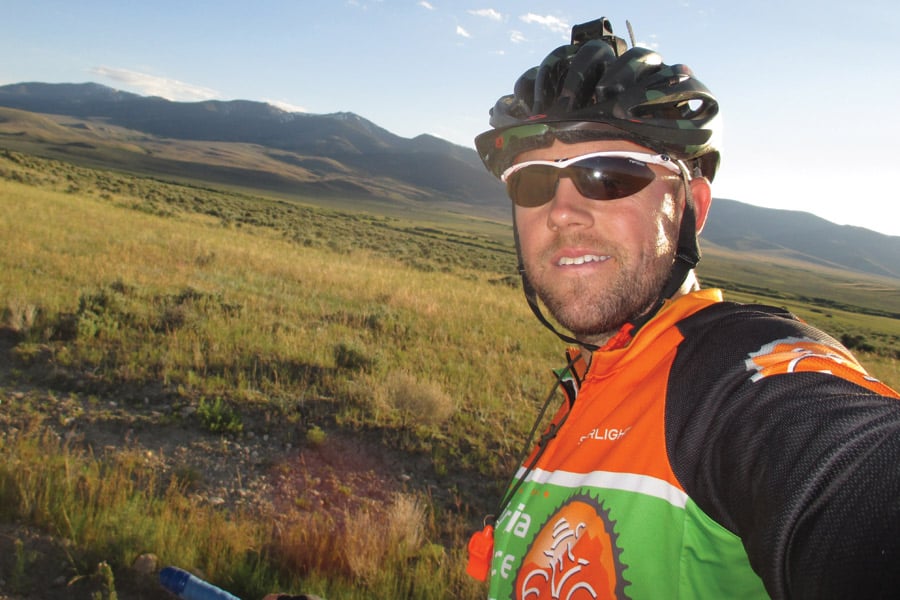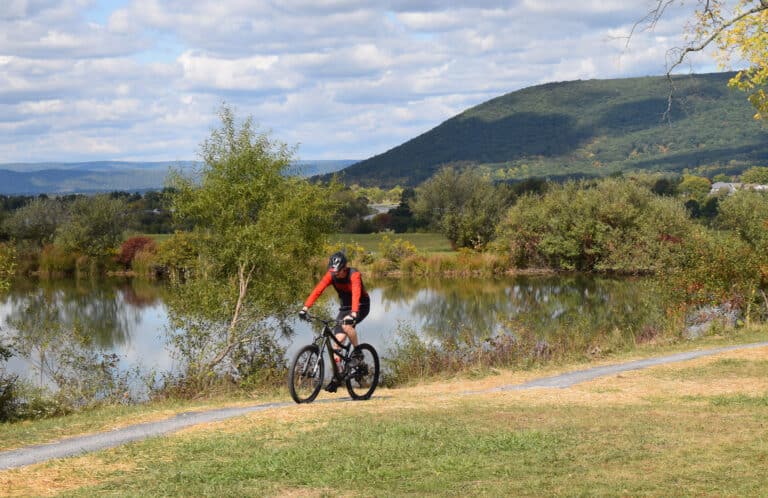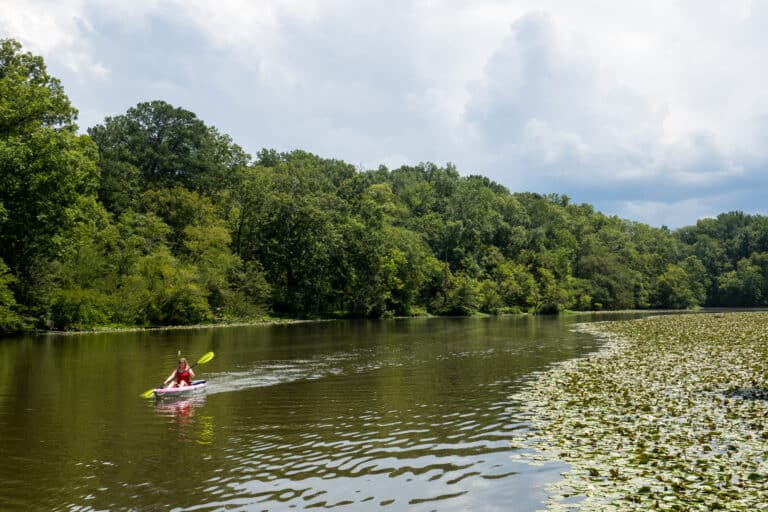Some mountain bikers say gears are overrated. They are noisy. The deraileur is just another piece of metal to replace or repair. And having so many gear choices is ridiculous. It’s always going to hurt on that climb, so why not get it over with quicker?
Josh Taylor agrees. The 31-year-old rode the Continental Divide Ride, 2,700 miles from Canada to New Mexico, on a rigid singlespeed. To train, he hauled his 2-year-old and 4-year-old daughters in a trailer on his bike up the steepest forest roads he could find. He says that if you have to ask why the singlespeed, you just don’t know. Pushing his bike through five miles of thigh-high snow in Montana made him suffer most. The hypothermia wasn’t much fun either, but that wasn’t the bike’s fault.
Q: What were you riding?
A: A carbon fiber Cannondale Flash, 34 in the front, 18 in the back, disk brakes, arrow bars, bags, seat bag, frame bag, two gas tanks, and a handlebar bag. I had 39 pounds of stuff.
Q: What did you eat?
A: I ate a LOT of junk. I’m not a candy person, but candy bars and gatorade kept me going. There was about 100 miles between stops, but sometimes as many as 175 miles. I was starving and couldn’t wait to get to Pie Town. I got there to find a closed diner and one store. I was looking forward to throwing down a big meal and instead had coke with peanut butter sandwiches.
Q: How long did it take you?
A: 27 days, five hours, and eight minutes. My goal was 19 days, but I was going to be okay with 25. My average goal per day was 100 miles. The most I did was 143, from Idaho to Pinedale.
Q: What was the hardest part?
A: The first six days was nothing but rain and snow. It was the worst on record as far as weather goes. I got hypothermia from being so wet and the highest temperature was 39. It was miserable. I only went 47 miles. A lot of people went home. Of the 133 people who started, only 49 finished.
Q: Can you compare this to anything else you’ve been through?
A: I’ve been biking and doing off-road triathlons and this is by far the hardest thing I’ve done in my life, especially since it’s self-supported. There’s nobody out there to help you.
Q: What about sleep?
A: I would stop around midnight and my body got into a natural rhythm, waking at 5 or 6. In the beginning I spent about a third of the time in hotels because the last thing I wanted to do while cold and soaking wet was climb into a sleeping bag. I also stayed in teepees, bathrooms, and under a bridge. After an 87-mile day of misery in Montana I stopped at a hotel that was actually just a cabin with rooms and they were asking $195 a night. It wasn’t nice or anything. I had dinner, a few beers, dried my stuff by the lobby fire and then slept in a nearby campground bathroom. It was so nice in there. Just as nice as the five-star hotel.
Q: What was your favorite section for riding?
A: The aspens in Colorado were awesome. Northern New Mexico was beautiful, too. A lot of greens and mountains with some great climbing.
Q: Which section was most dreadful?
A: Wyoming. The wind was terrible. It was a freezing open basin with lightning, hail, and no place to find cover. I fought a 60-mile-per-hour headwind out of Rollins for 60 miles.
Q: What kinds of realizations did you come to?
A: In the beginning it was about cranking out the daily 100 miles. Toward the end it was more about enjoying it. The things you’re used to go out the window. It’s really about how much suffering can you put up with. The first two weeks was a lot of reflection. There’s so much time to think. I was hurting every day. It was a physical and emotional roller coaster every day. I broke down emotionally in Colorado. I was fighting a headwind. I was tired. I was done. The road felt like it was flat, but I had to walk my bike. I wanted to throw my bike. The road ended up going downhill into a ravine. It finally turned downwind, and as I was listening to my iPod, our wedding song came on. I lost it. I realized that I have the best of everything. My wife, my friends, family, kids. It was nice to realize that.








